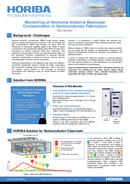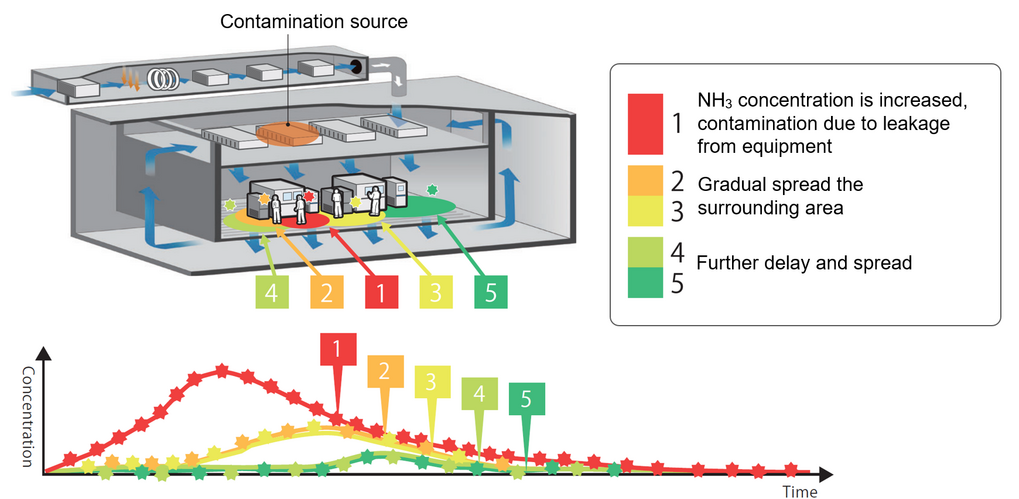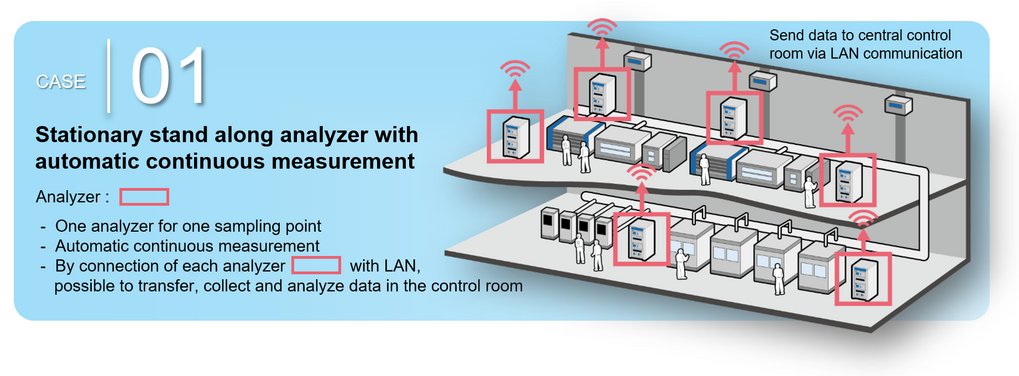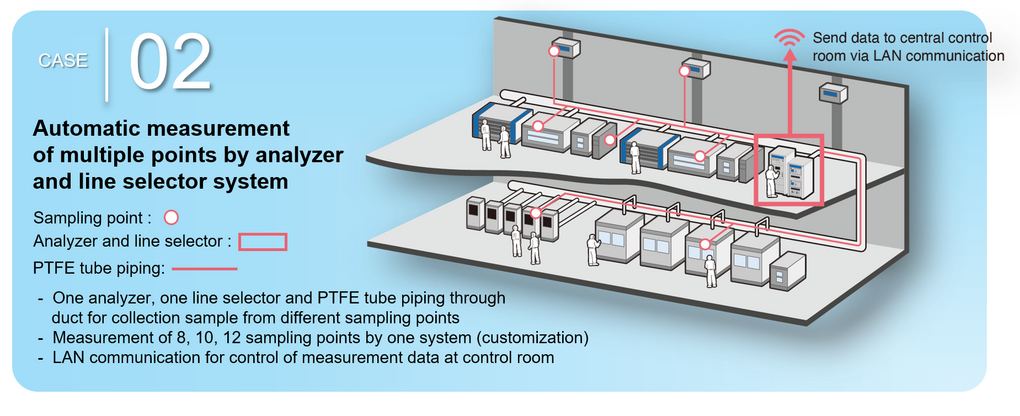

Los contaminantes moleculares transportados por el aire (AMC) causan problemas de calidad del producto en la producción moderna de semiconductores, incluso a concentraciones de ppb extremadamente bajas. Los AMC se convirtieron por primera vez en un problema con la introducción de resistencias amplificadas químicamente en la década de 1990. Un defecto ocurrió una vez que los ácidos iniciados fotolíticamente dentro de la resistencia fueron neutralizados por amoníaco en el aire (NH3) de la sala limpia. Esta interacción es relevante para el defecto del dispositivo, ya que deteriora el ancho de la línea y las estructuras de la línea. Por lo tanto, la medición de la contaminación molecular por amoníaco en el aire en salas limpias se volvió común, y la cromatografía iónica se ha utilizado durante mucho tiempo.
La contaminación por amoníaco en la sala limpia puede provenir de diferentes fuentes, a veces inesperadas: entrada de aire exterior, evaporación del personal o fugas del equipo. De vez en cuando, se producen eventos aleatorios que provocan un aumento de la concentración de amoníaco y dan lugar a una neblina en la superficie óptica de las retículas y los espejos. Sin embargo, es problemático identificar y eliminar rápidamente la fuente de contaminación por amoníaco antes de que afecte al rendimiento de la producción, ya que puede provenir de cualquier lugar.
El análisis manual de AMC no proporciona una alta resolución espacial y puede demorar la detección de contaminación, lo que provoca la propagación de la contaminación a través de la sala limpia y conduce al deterioro del rendimiento.
Para minimizar la pérdida de rendimiento causada por la contaminación molecular del aire por amoníaco, es muy importante obtener datos de análisis con alta resolución espacial para la determinación rápida de la fuente de contaminación y contramedidas inmediatas.
Sistema de Monitoreo AMC
En la sala limpia, donde el análisis de AMC se realiza manualmente, el muestreo solo en el punto [5] de la Figura 1 puede causar un retraso en la detección de contaminación y propagación de AMC a través de toda la sala limpia. El sistema de medición multipunto HORIBA compuesto por el Selector de línea y el Sistema de monitoreo de AMC con múltiples puntos de muestreo [1] [2] [3] [4] [5] en la Figura 1 permite aumentar la resolución espacial del análisis, lo que conduce a la detección temprana de la fuente de AMC y contramedidas rápidas. Dicho sistema de monitoreo de AMC multipunto puede contribuir a la mejora en los rendimientos de producción, la calidad y la confiabilidad del dispositivo.

Figura 1 Monitoreo de AMC multipunto



Analaizador de amoniaco
Tiene alguna pregunta o solicitud? Utilice este formulario para ponerse en contacto con nuestros especialistas.
